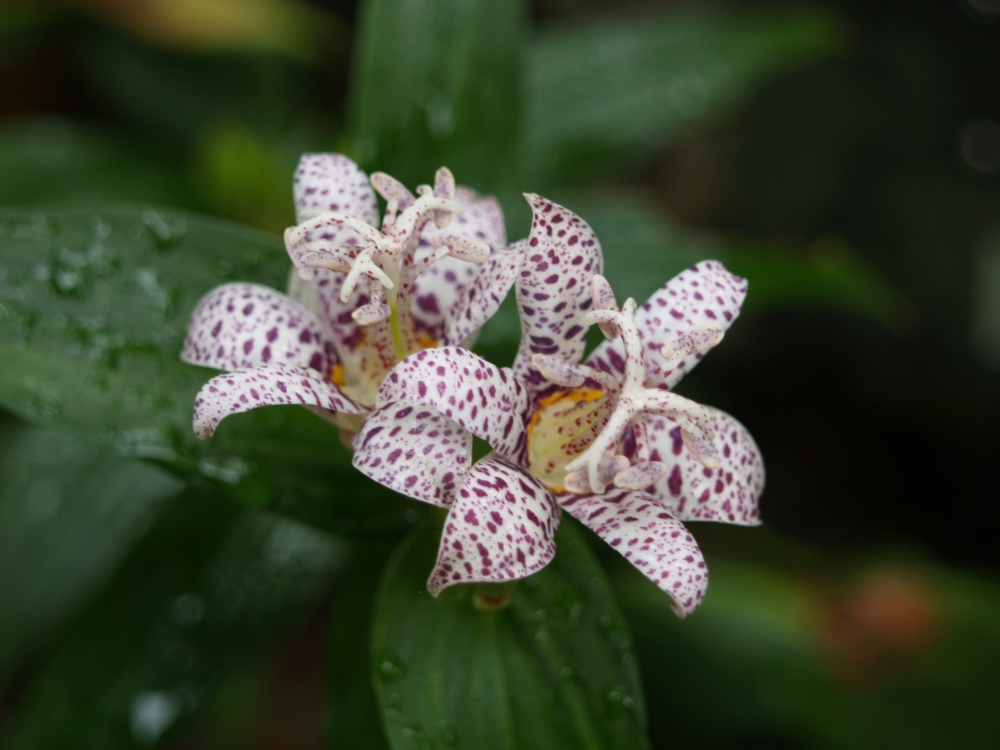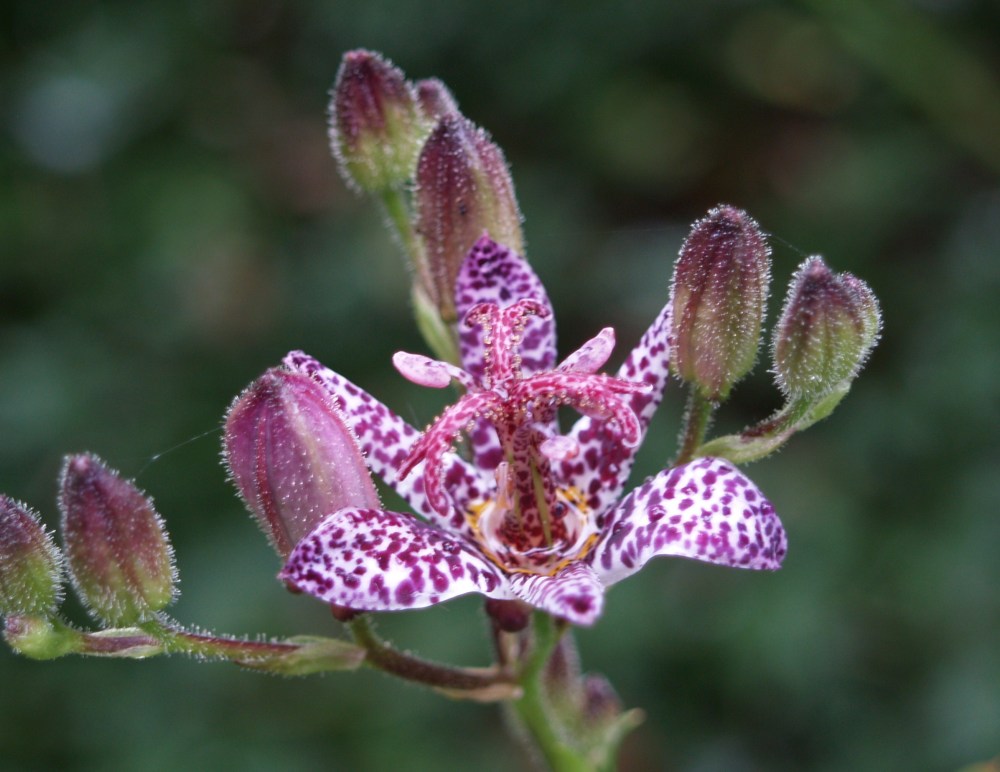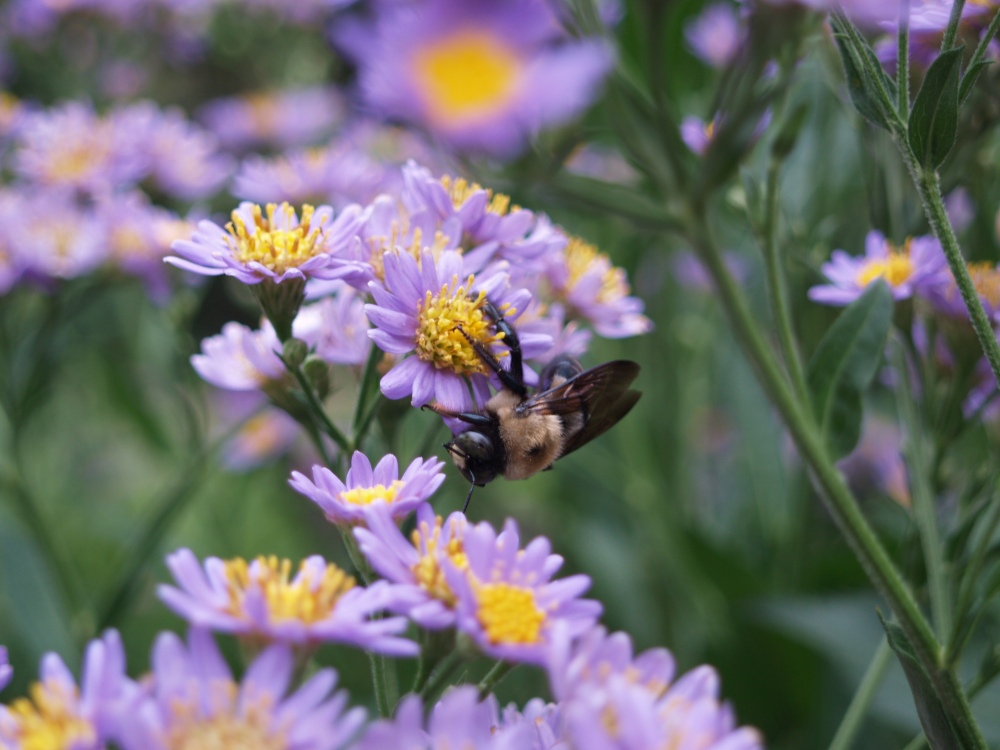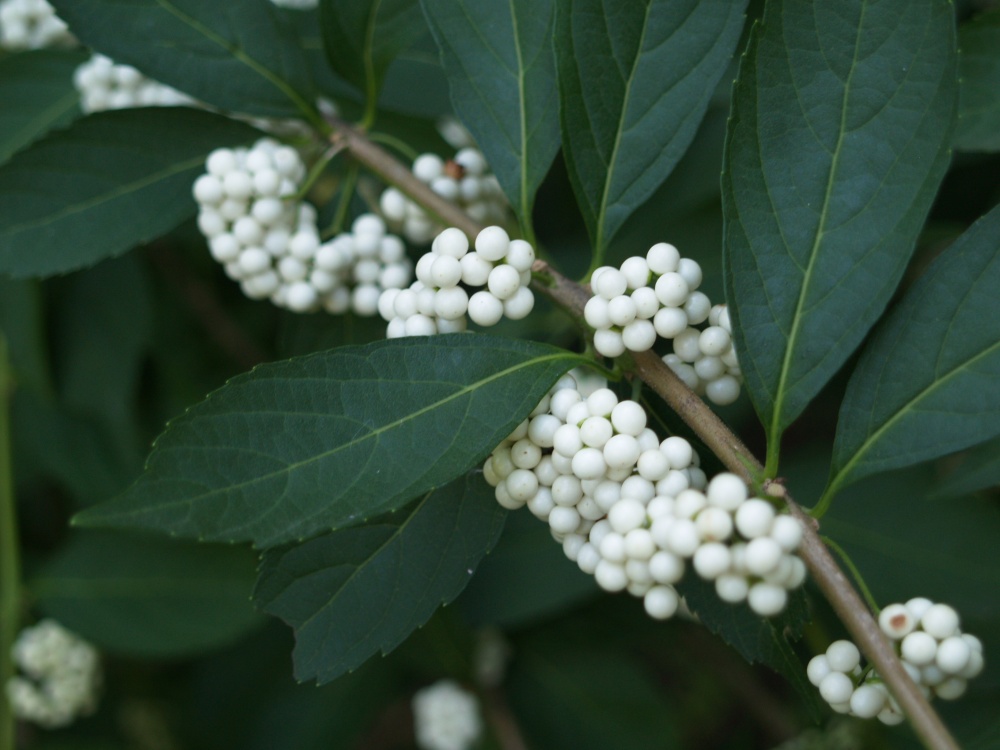There will be dry spells when the garden’s soil turns to dust, and there is little to be done besides breaking out the hose to water the aucubas and hydrangeas that have wilted and look so miserable. It does no good to moan over the sorry state of the lawn, or to whine that the elephant ears have lost their vigor late in the summer when they should be at their peak.
After six weeks with barely a drop, today it’s raining, though I fear it will not be enough to quench the thirsty garden. After only a few hours of light rain the gold splotched aucubas have regained their vitality, and the poor windflowers (Anemone ‘September Charm’, above) that were a bit crisp around the edges are standing tall again, happily bending in the breezy drizzle.
Since the start of September I have nagged that the toad lilies have been tardy to bloom, though the stems are covered in fat buds. Only the floppy ‘Samurai’ bloomed on schedule in August, with ‘Miyazaki’ (Tricyrtis hirta ‘Miyazaki’, above) and others following this last week of September. Now, flowering buds will open over the next month if we are fortunate enough that a hard frost or freeze does not come too early.
At its peak bloom the small flowers are only moderately attractive from three or four paces away, so toad lilies must be located to be appreciated at arms length, or closer, ideally beside a patio or path where the gardener is comfortable kneeling without crushing neighbors that are creeping on the ground beneath. When given such a favored position the reward is an extended bounty of exquisite speckled blooms with remarkable structure.
Besides blooming later than expected the toad lilies have suffered little from the drought, and despite my determination to let the garden fend for itself there are few signs of the stressful late summer. Shallow rooted lawn grasses and perennials are most vulnerable to injury from dry soil, and though the lawn is a pitiful sight, many of the late summer bloomers have grown lush with abundant flowers.
The Tatarian daisies (Aster tataricus ‘Jindai’, above) have grown past six feet, taller than I’ve seen them before, with hundreds of yellow-centered violet flowers that tower over the coarse, corrugated leaves. The small blooms are favored by butterflies and bees, and I’ve been forced to alter my path through the back garden lest I continually disturb their nectar gathering.
The beautyberries (Callicarpa dichotoma ‘Early Amethyst’, above, and ‘Albifructa’, below) have not been bothered at all by the heat and drought, planted just above a depression that is constantly damp from the trickle of a spring that meanders through the border at the back half of the garden. The foliage of beautyberry is an ordinary green, and its awkward form is best relegated to the back of the garden, but the berries are robust and brightly colored, and persist long after the foliage drops.
As October approaches, and the threat of frost is near, there are few days remaining to enjoy the blooms of toad lilies, asters, and late blooming sunflowers. A bit of rain and cooler temperatures will perk up blooms and help to prepare the garden for the winter to come.